December 2, 2023
I have discussed the fact that it is Momiji-gari season in Japan. I have attributed a large portion of the crowds to this since the lesser temples appear to be quiet and peaceful.
Today was so bad that it gave even this seasoned traveler pause. I do not travel to be a part of a horde of people clicking off destinations. Even worse, hordes that are rude and disrespectful of the local culture.
Today, I wondered why I was here. But I am not alone. The Japanese actually have a word for what I am seeing: Kankō kōgai, or tourism pollution.
In January of 2023, the Japanese Tourism Board predicted a 450% year-on-year increase in inbound tourism, and they were probably spot on. They also predicted an 8.6% increase in domestic travel.
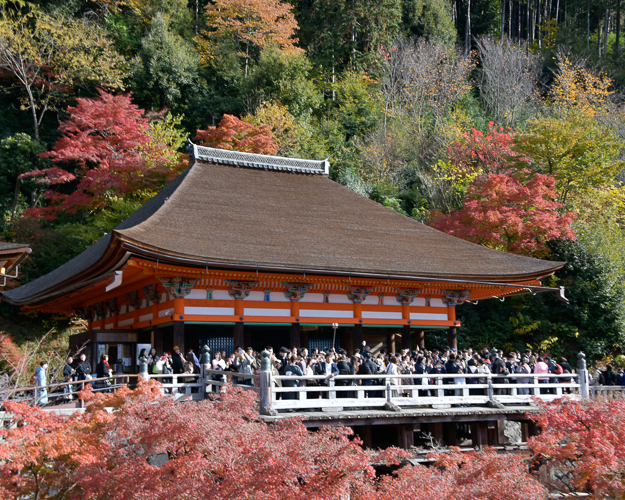
I will grant you, it is a Saturday and a glorious one at that, but this was the crowd in just one small sliver of the vast Kiyomizu-Dera Temple. Yes, Kiyomizu-Dera is best known for this very wooden stage that juts out from its main hall, but who wants to enjoy the view amongst that?
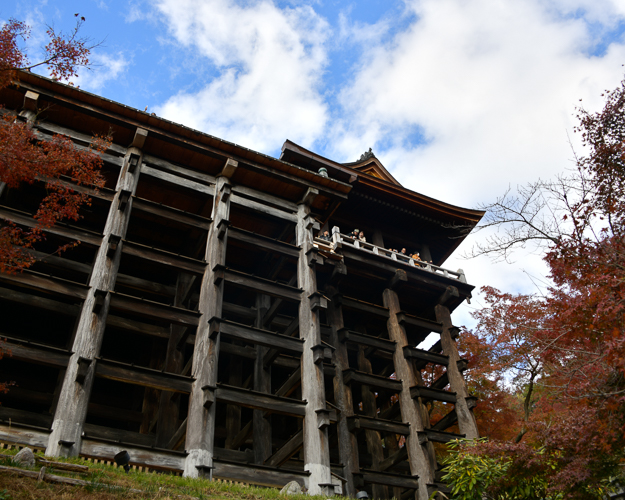
If you are worrying about the safety of being on an ancient platform with a crowd like that, here are the underpinnings of the structure.
Kiyomizu-dera was founded in 780 on the site of the Otowa Waterfall and derives its name from the fall’s pure waters. It is a UNESCO World Heritage Site.
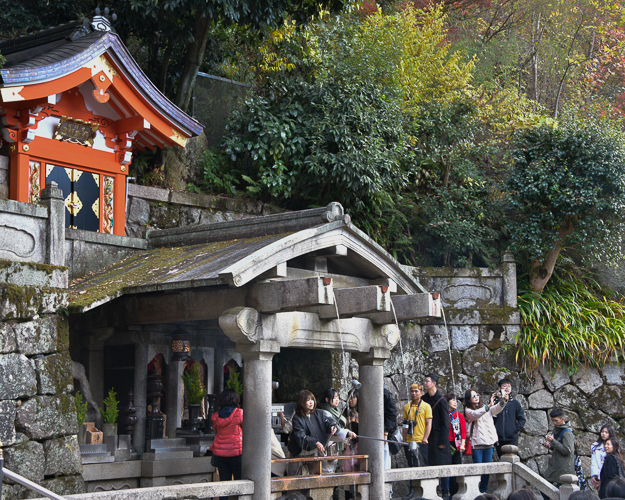
Beneath the main hall is the Otowa waterfall, where three channels of water fall into a pond. Visitors can catch and drink the water, which is believed to have wish-granting powers.
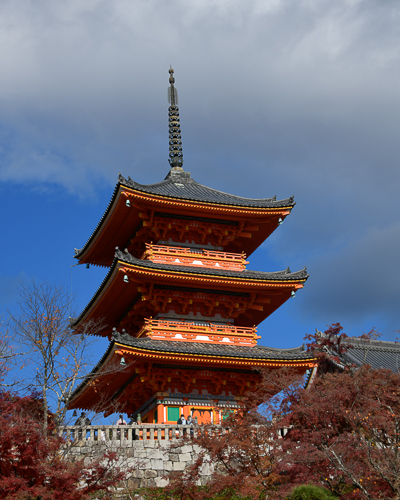 The Koyasu is an impressive three-story pagoda complete with a spire, which was designed to house sacred texts and relics. Built between 1607 and 1633 CE, it is an excellent example of Momoyama architecture.
The Koyasu is an impressive three-story pagoda complete with a spire, which was designed to house sacred texts and relics. Built between 1607 and 1633 CE, it is an excellent example of Momoyama architecture.
These crowds were just a small sample of what covered the streets of the Higashiyama and Gion Districts.
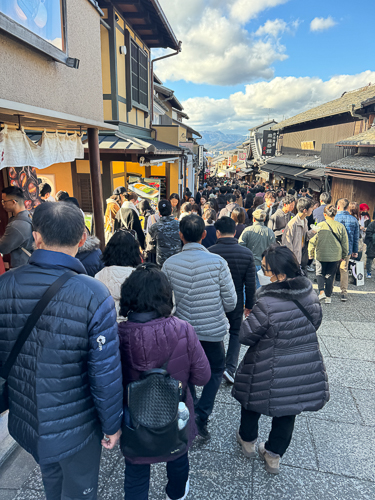
The area feels more like a movie set or Disneyland than a city. The streets hawk cheap tourist wares and lots and lots of food. They are also filled with people who have rented kimonos for the day and stop in the middle of the street, with no respect for anyone around them to shoot a selfie or pose ad nauseam for their friends.

This is a HUGE business in this part of Kyoto, with hundreds of places to rent outfits for the day.
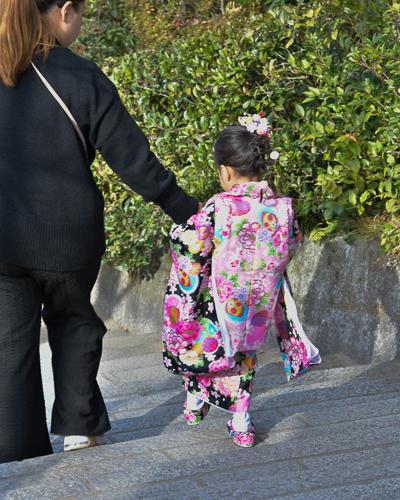
She was a delight to capture and a true reason to stop and rent a kimono.
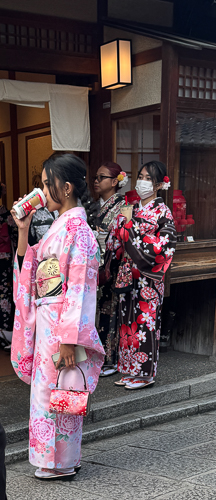
These girls were lovely and probably having a wonderful time, however, in Japan, drinking coffee and or eating while walking is generally considered impolite and disrespectful. This action even has a name in Japan: Tabearuki (食べ歩き) “eating while walking”. The word is a combination of two Japanese verbs: 食べる (taberu), which means “to eat”, and 歩き (aruki), which means “to walk”.
But why is it disrespectful? One reason Japanese people often give for not eating while walking is that there is a time and place for everything. It is important to develop an appreciation and respect for the seasonality and the geographical origins of flavors and ingredients. Eating while walking is seen as disrespectful to the food and the person preparing it. If you delve far enough, you may even be able to attribute it to the Shinto Religion, which feels that quiet while eating is imperative, something that is not possible if you are eating in the streets.
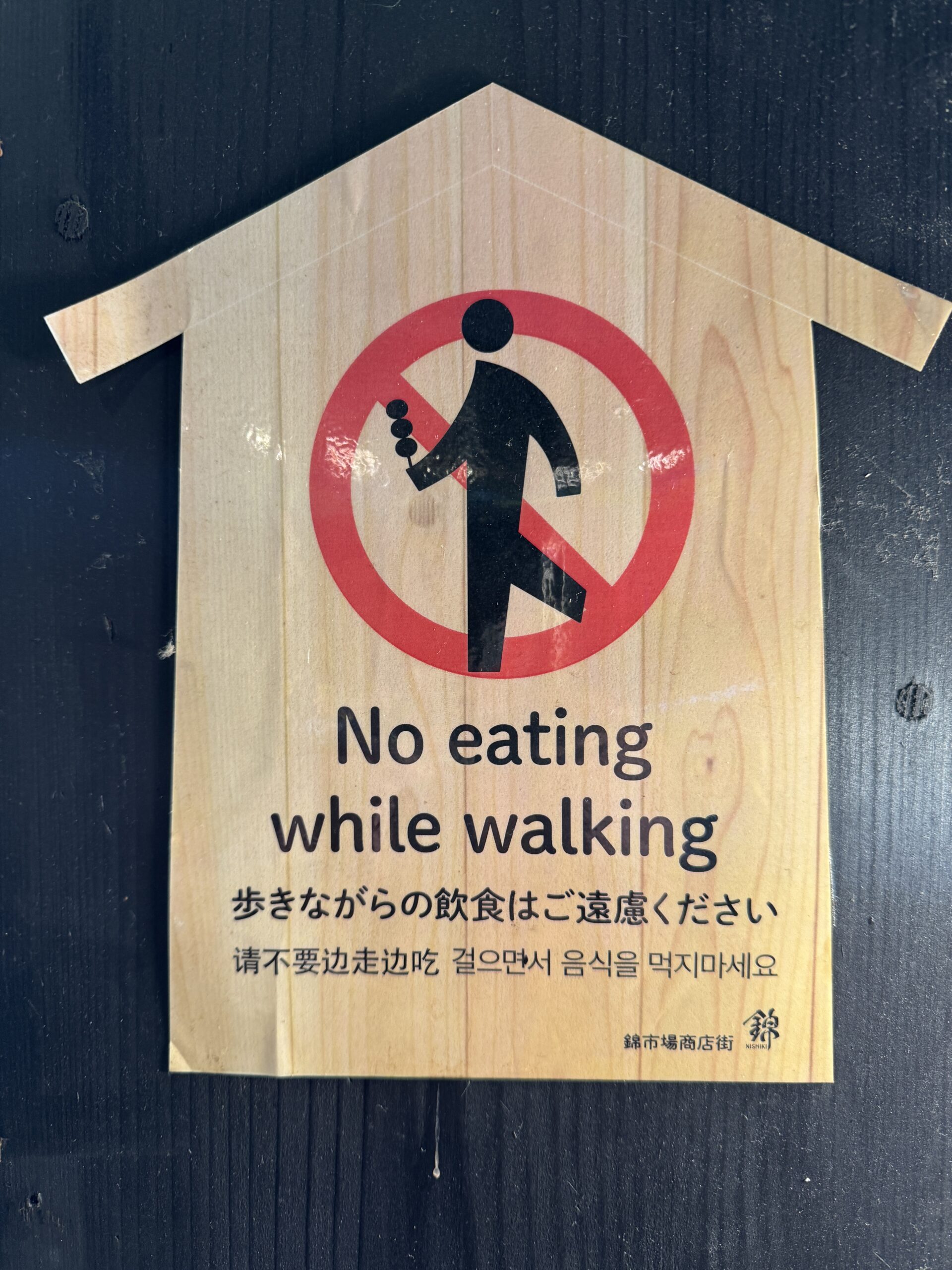
This is not a new thing. In the Edo period (1603-1868), the ruling shogunate enforced strict rules regarding behavior and etiquette. These rules included not eating or drinking outside of designated areas, such as inns and tea houses. This was done to prevent people from disturbing the peace or creating a mess on the streets.
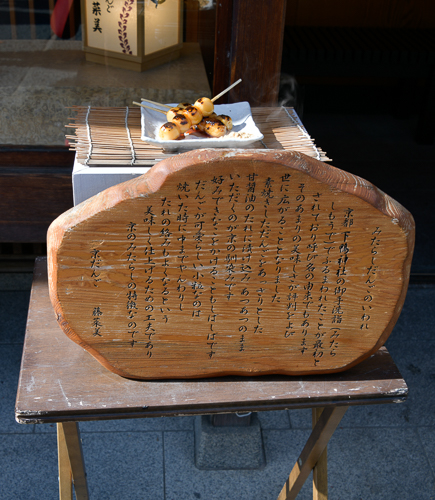
Even if the food is displayed on the street, it is not to be eaten on the street. Find a bench or sit inside to consume your treat.
Prior to Covid, Kyoto had been buckling under the strain of over-tourism, with congestion and bad behavior. With etiquette problems becoming so widely reported in the news, some Japanese avoided going to Kyoto.
Kyoto has once again been receiving record numbers of foreign tourists. China lifted its three-year ban on group tours to Japan, and Kyoto is now flooded with Chinese tour groups (along with Korean, Taiwanese, Thai, and others). Western visitors are also coming in record numbers, attracted by the affordability of Japan due to the weak yen.
The result is that Kyoto is now filled to capacity with tourists.
To top it off, Tourism Minister Tetsuo Saito and U.S. Ambassador to Japan Rahm Emanuel signed a memorandum of cooperation to designate 2024 as a year to promote tourism between the two countries.
The number of U.S. visitors to Japan has been steadily increasing, as I said, aided by the depreciation of the yen against the dollar. The monthly figure totaled some 210,000 in October, up by 40% from the same month in 2019, before the pandemic.
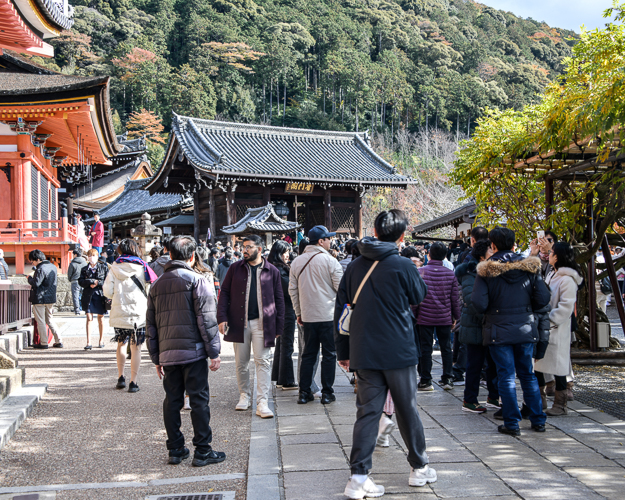
I LOVE Kyoto, and this is not a rant against the city or its citizens but against the ridiculous amount of tourists and their bad behavior. I am a firm believer in knowing the culture before you hop on an airplane and respecting it once you get there. Look but don’t touch, and enjoy the experience – the hell with the Instagram photo. Also, try to learn a few polite phrases in the language of the country you are visiting. I have attempted to go beyond please, thank you, and good morning in Japan. I am trying hard to learn the language. I believe I will finally begin to form an entire sentence in 2200.
 Kyoto was on the verge of bankruptcy due to covid, as they rely solely on tourism, so this influx is making it profitable for the local businesses, but it is truly turning some parts of Kyoto into a vast phony environment of costumes and tourist traps. Something many Japanese businesses most likely feel isn’t worth the extra profit.
Kyoto was on the verge of bankruptcy due to covid, as they rely solely on tourism, so this influx is making it profitable for the local businesses, but it is truly turning some parts of Kyoto into a vast phony environment of costumes and tourist traps. Something many Japanese businesses most likely feel isn’t worth the extra profit.
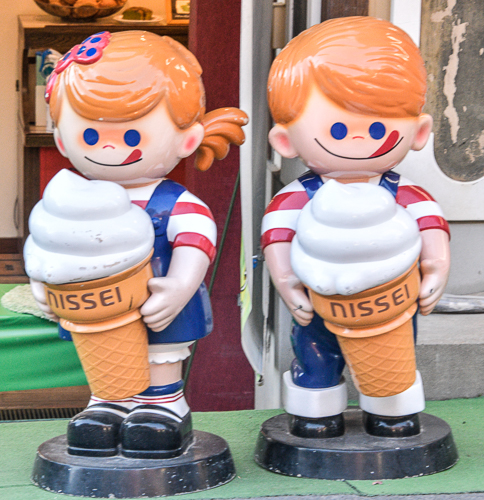
I will avoid the more popular locations as best as possible, and from here forward, I will write about the lesser-known, lesser-trodden parts of Kyoto. (I hope)